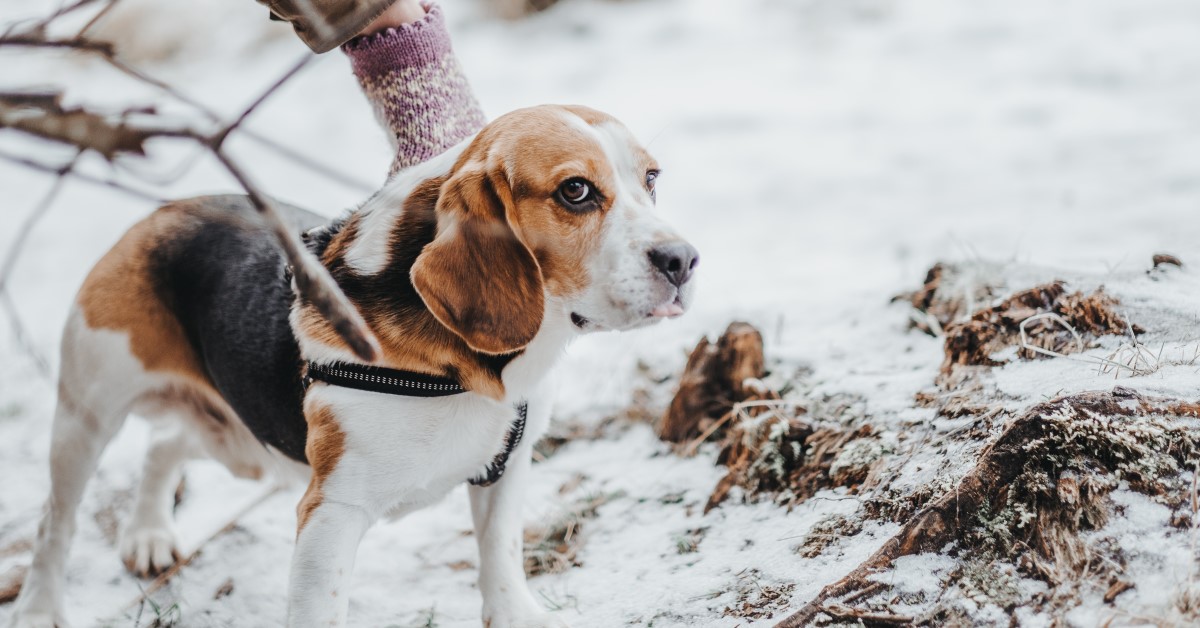How Cold is Too Cold: Keeping Your Dog Safe From Winter Chills
When icy winds howl and snow flies, it’s time to prepare your dog for the frosty cold of winter. Here’s how.

It’s the eve of winter, and with it for many of us come ice, snow, wind, and endless gray skies. Our days of romping with our dogs on the beach or in the park have ended or are at least limited. However, being outside is still essential for a dog’s health and well-being. The question becomes how cold is too cold, how snowy is too snowy, and how wet is too wet?
Basic Temperature Guidelines
Just like all people have different tolerance for cold, the same is true for dogs. Think of Alaskan Malamutes and Huskies. They have thick, double coats that protect them from most levels of cold. On the other hand, dogs like Boston Terriers and Greyhounds have short, fine coats that provide them with little insulation. Generally, small dogs are less able to tolerate winter weather, while their bigger, hairier cousins do reasonably well.
When the temperature drops and hits the 45-degree mark, it’s time for you to keep a close eye on how your dog handles the colder temperatures. At this level, small dogs, old dogs, and unhealthy dogs may show some minor signs of cold intolerance, such as slight shivering. At the 32-degree level is where more serious cold intolerance sets in. Here you may see whining, crying, shivering and standing still. Anything below 20-degrees is dangerous, leading to the possibility of hypothermia or frostbite.
Various Weather Conditions
It’s not just the temperature that affects dogs; other weather factors also affect a dog’s comfort level.
Wind chill
When it’s windy outside, a dog feels colder than what the actual temperature indicates. The same is true for us humans. The phrase “it cuts right through you” describes how this feels.
Precipitation and wetness
Snow and rain can soak through to a dog’s skin and cause him to catch a nasty chill.
Cloudy days
Given two days at the same temperature, the cloudy one will feel much colder than the sunny one.
Movement
A playful, moving dog will naturally generate body heat and feel warmer than a dog just standing around.
Dog’s Natural (and not) Protection
As mentioned, small dogs and dogs with thin coats don’t tolerate the cold as well as bushy, thick-coated dogs. But other characteristics also predispose dogs one way or the other in the winter months.
Coat Type
Dogs with double-layered coats fare the best in the cold. Examples include Huskies, Newfoundlands, and Samoyeds. These breeds were also developed in northern climates, so their biological makeup enables them to adapt to cold weather quickly. On the other hand, the thin-coated breeds shiver and shake at temperatures much higher.
Coat Color
Believe it or not, the color of a dog’s coat affects his ability to withstand cold. In sunlight, dogs with dark-colored coats absorb heat from the sun and stay warmer than lighter-colored dogs.
Size
Small dogs don’t have enough skin to insulate and prevent the warmth generated by their bodies from escaping.
Weight
It’s no surprise that a dog with more bodyweight, translated as fat, has plenty of insulation as opposed to a thin dog. However, as you know, being overweight is not a healthy place for a dog to be.
Relative Cold
The cold in November feels much colder than the cold in April. Once a dog becomes accustomed to the season, he’ll become used to the relative temperatures.
Older and Unhealthy Dogs
Sadly, our older companions are not physiologically equipped to handle the cold anymore and will exhibit signs of intolerance much sooner than a healthy dog. The same is true for a sick dog whose immune system isn’t strong enough for its body to generate the warmth it needs.
Cold and Winter Dangers
So, what does this all mean? Here we break down the individual signs and signals based on different levels of cold and potential consequences for a dog.
Arthritis
Older dogs generally suffer from arthritis, which makes them hobble from stiffness and pain. Arthritis gets worse in the cold weather, so plan on limiting the time your older companion spends outdoors in the winter.
Hypothermia
Just like humans, dogs can suffer from hypothermia ranging from mild to severe. Hypothermia affects a dog’s blood flow, heart rate, breathing and possibly even causes death. Look for these symptoms of hypothermia in your dog: shivering, weakness, stiffness, and breathing irregularities. Hypothermia warrants an immediate call to the vet.
Frostbite
A dog can get frostbite on his paws. His sweat glands are located on the bottom of his paws, and from the moisture they release, ice balls can form and cut or press into a dog’s paw. Watch for frostbite on your dog’s ears and tail as well.
Salt
One of the staples of extra cold and snowy winters is the salt put down to keep roads clear from ice and snow. Unfortunately, this salt can also wreak havoc on a dog’s paws. Be sure to wipe off your dog’s paws when you come in for your winter walks.
How to Protect Your Dog in Cold Weather
- Don’t allow him to spend his usual amount of time outdoors. If you go for a walk, keep it shorter and go during daylight hours, preferably when the sun is shining.
- Cut back on baths. The number of baths you give depends on whether your dog tends to get dirty quickly, but you may only need one or two baths a winter for your short-haired pet.
- Dress him in a coat or sweater. This is especially important for your old or sick dog.
- Booties? Most dogs either won’t move or walk quite awkwardly with booties on, but if you are walking in an area with a heavy amount of salt or it is freezing, they may be worth the investment.
So, as the leaves fall off the trees, the temperatures drop, and the snow begins to fly, be sure to give your dog the same care and preparation as you do your fellow humans. Winter can be full of fun and frolicking when you are both aptly equipped.
Ready to start saving money on pet wellness care?
Then take a look at Mint Wellness, the pet wellness plan that provides fast reimbursement on routine pet care. Save on vaccinations, wellness exams, preventatives, dental, and more!
Learn More


